第143章
But this may not always be the case. In my view, one of the most important things to be done by the trustees is to have a general plan most carefully decided upon which shall be strictly conformed to in the erection of all future buildings, no matter what their size or character may be. This has been urged from time to time, but deferred.[9] The experience of other universities in the United States is most instructive in this respect. Nearly every one of them has suffered greatly from the want of some such general plan. One has but to visit almost any one of them to see buildings of different materials and styles--classical, Renaissance, Gothic, and nondescript --thrown together in a way at times fairly ludicrous.
Thomas Jefferson, in founding the University of Virginia, was wiser; and his beautiful plan was carried out so fully, under his own eyes, that it has never been seriously departed from. At Stanford University, thanks to the wisdom of its founders, a most beautiful plan was adopted, to which the buildings have been so conformed that nothing could be more satisfactory; and recently another noble Californian--Mrs. Hearst--has devoted a queenly gift to securing a plan worthy of the University of California. At the opening of Cornell, as I have already said, a general plan was determined upon, with an upper quadrangle of stone, plain but dignified, to be at some future time architecturally enriched, and with a freer treatment of buildings on other parts of the grounds; but there is always danger, and I trust that I may be allowed to remind my associates and successors in the board of trustees, of the necessity, in the future development of the university, for a satisfactory plan, suitable to the site, to be steadily kept in mind.
[9] It has now--1904--been very intelligently developed.
CHAPTER XXIV
ROCKS, STORMS, AND PERIL--1868-1874
Thus far I have dwelt especially upon the steady development of the university in its general system of instruction, its faculty, its equipment, and its daily life;but it must not be supposed that all was plain sailing. On the contrary, there were many difficulties, some discouragements, and at times we passed through very deep waters. There were periods when ruin stared us in the face--when I feared that my next move must be to close our doors and announce the suspension of instruction.
The most serious of these difficulties were financial. Mr.
Cornell had indeed endowed the institution munificently, and others followed his example: the number of men and women who came forward to do something for it was astonishing. In addition to the great endowments made by Mr. Cornell, Mr. Sage, Mr. McGraw, Mr. Sibley, and others, which aggregated millions, there were smaller gifts no less encouraging: Goldwin Smith's gift of his services, of his library, and of various sums to increase it, rejoiced us all; and many other evidences of confidence, in the shape of large collections of books and material, cheered us in that darkest period; and from that day to this such gifts have continued.
Some of the minor gifts were especially inspiring, as showing the breadth of interest in our work. One of them warmed my heart when it was made, and for many years afterward cheered me amid many cares. As Mr. Sage and myself were one day looking over matters upon the grounds, there came along, in his rough wagon, a plain farmer from a distant part of the county, a hard-working man of very small means, who had clearly something upon his mind. Presently he said: ``I would very much like to do something for the university if I could. I have no money to give; but I have thought that possibly some good elm-trees growing on my farm might be of use to you, and if you wish them I will put them in the best condition and bring them to you.'' This offer we gladly accepted; the farmer brought the trees; they were carefully planted; they have now, for over twenty years, given an increasing and ever more beautiful shade to one of the main university avenues; and in the line of them stands a stone on which are engraved the words, ``Ostrander Elms.''